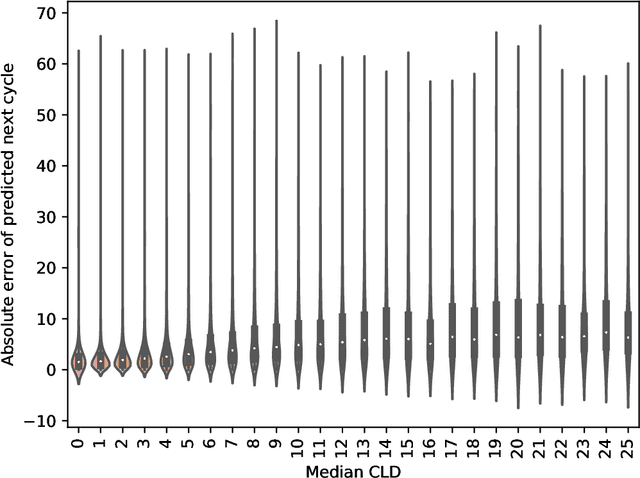Virginia J. Vitzthum
A generative, predictive model for menstrual cycle lengths that accounts for potential self-tracking artifacts in mobile health data
Mar 16, 2021



Abstract:Mobile health (mHealth) apps such as menstrual trackers provide a rich source of self-tracked health observations that can be leveraged for health-relevant research. However, such data streams have questionable reliability since they hinge on user adherence to the app. Therefore, it is crucial for researchers to separate true behavior from self-tracking artifacts. By taking a machine learning approach to modeling self-tracked cycle lengths, we can both make more informed predictions and learn the underlying structure of the observed data. In this work, we propose and evaluate a hierarchical, generative model for predicting next cycle length based on previously-tracked cycle lengths that accounts explicitly for the possibility of users skipping tracking their period. Our model offers several advantages: 1) accounting explicitly for self-tracking artifacts yields better prediction accuracy as likelihood of skipping increases; 2) because it is a generative model, predictions can be updated online as a given cycle evolves, and we can gain interpretable insight into how these predictions change over time; and 3) its hierarchical nature enables modeling of an individual's cycle length history while incorporating population-level information. Our experiments using mHealth cycle length data encompassing over 186,000 menstruators with over 2 million natural menstrual cycles show that our method yields state-of-the-art performance against neural network-based and summary statistic-based baselines, while providing insights on disentangling menstrual patterns from self-tracking artifacts. This work can benefit users, mHealth app developers, and researchers in better understanding cycle patterns and user adherence.
 Add to Chrome
Add to Chrome Add to Firefox
Add to Firefox Add to Edge
Add to Edge